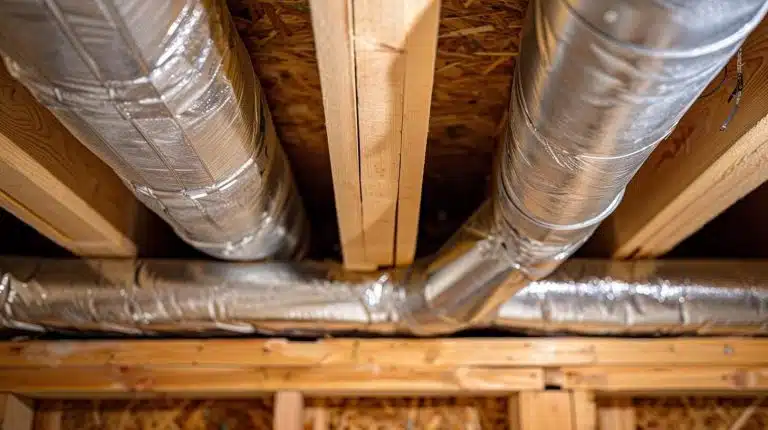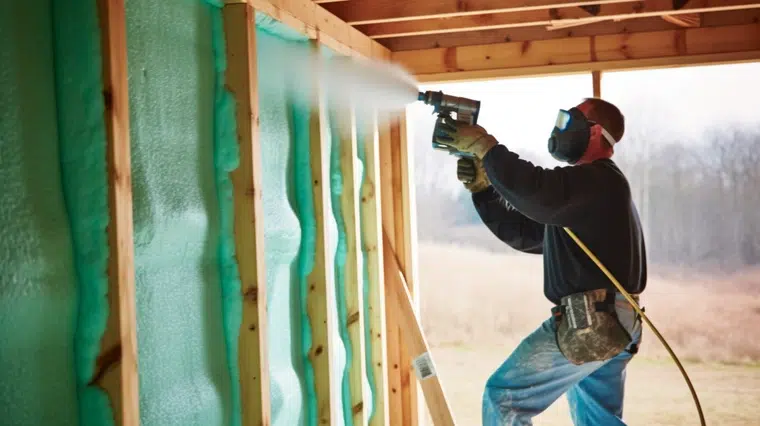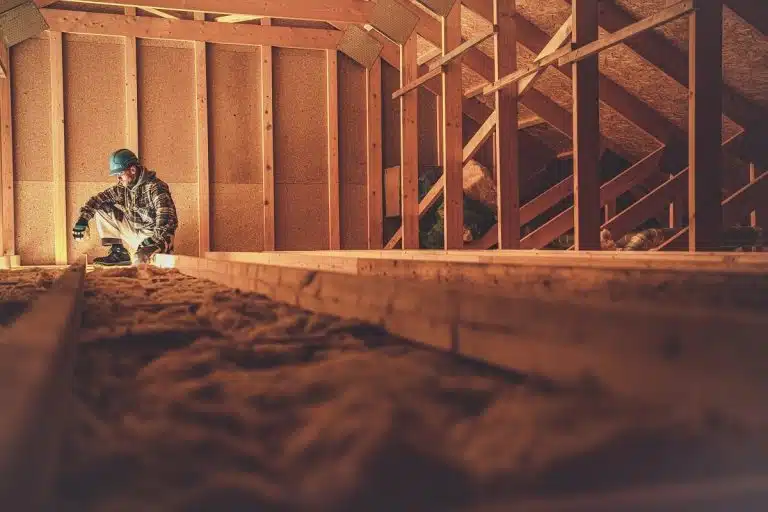The right attic insulation can result in an amazing difference in your home’s energy efficiency and comfort. With nearly 20 years of insulation expertise, Envirosmart Solution has the knowledge to help you identify the ideal insulation for your attic and climate.
In this guide, we cut through the jargon to explain the lowdown in choosing attic insulation. We’ll overview the main types, including radiant barrier insulation, and decode R-values so you can compare materials.
The ideal insulation for your home depends on your climate, house design, and budget. For example, a home in a hot, dry area has very different insulation needs compared to one in a humid climate. The perfect insulation for an attic in Arizona will differ from the best choice for a Minnesota attic due to its contrasting weather and conditions.
If you are in Seattle – Tacoma, or the surrounding Puget Sound area, reach out to our seasoned team at Envirosmart Solutions if you need guidance selecting attic insulation for installation in your home.
But for now, let’s get started building your insulation know-how.
Understanding Attic Insulation
Let’s start with the basics – what is attic insulation, and why does it matter?
Attic insulation is material installed in your attic to help:
- Regulate indoor temperatures
- Reduce energy costs
- Keep your home comfortable
Insulation comes in different materials, each with its own strengths. There are also R-values to consider, which indicate the insulation’s effectiveness. (We’ll give you the gen on what those are shortly).
The point is attic insulation is a big deal when it comes to:
- Saving money on bills
- Keeping rooms consistently comfortable
- Increasing your home’s efficiency
That’s why it’s so important to pick the right attic insulation for your home and climate. With the wrong type, your energy bills could be higher than necessary, and rooms end up being either too drafty or stifling.
The good news is that getting to grips with attic insulation basics is straightforward enough and puts the power in your hands to choose the best insulation for your attic.
Get a free quote fast, or call us at (206) 295-5925
Understanding R-Values – Your Insulation IQ Test
Alright, time for a pop quiz! Don’t worry, you got this.
What do R-values measure?
A) Resistance to heat flow
B) Rainfall amounts
C) Roof slope
D) Radon levels
If you guessed A, you’re on the right track to becoming an insulation expert!
R-values indicate an insulation’s resistance to heat flow. The higher the R-value, the better the material is at slowing heat transfer and trapping air.
R-values were developed in the 1950s by the insulation industry to help measure and compare thermal performance. They provide a standardized way to evaluate how well materials inhibit heat flow.
Why R-Values Matter
R-values are the best way to compare insulation types. The R-value required for your home depends on your climate:
- Warm climates like Arizona: R30
- Moderate year-round temps like Virginia: R38
- Colder regions like Minnesota: R49
Essentially – the denser the insulation, the higher the R-value.
Attic Insulation Types Explained
Insulating your attic can be done in several ways. Let’s break down the need-to-knows on the big three: blown-in, batts, and spray foam.
Blown-In Insulation
This type starts as small fiber pieces that get blown in using a special machine. The mini pieces fill all nooks and crannies for maximum coverage. Your attic stays chill in summer and cozy during winter nights.
Blown-in insulation is usually made from:
- Fiberglass – the most common option, made from recycled glass spun into ultra-fine fibers.
- Cellulose – recycled paper, cardboard, or wood fibers. Treated with a fire retardant.
- Mineral wool – spun-out rock fibers or slag from steel mills.
Benefits of blown-in insulation:
- Gets into cracks and tight spaces that other insulations can’t reach.
- Settles around ductwork, wiring, and roof rafters with a consistent depth.
- Doesn’t require installation between joists like batts.
- Cost-effective insulation option.
Potential downsides:
- Improper installation can result in settling and inconsistency over time.
- Some materials like fiberglass can irritate skin and lungs if exposed.
Batt Insulation
Batt insulation comes in rolls like big blankets. Installers lay these long fiberglass strips between your attic joists. Batts are usually made from mineral wool or fiberglass.
The widths vary, so batts can fit neatly between different joist spacings. They’re an easy DIY install for wide-open attics without obstructions.
Benefits of batt insulation:
- Easy for DIY installation by laying between joists.
- No special tools needed.
- Maintains its shape and position over time.
Potential downsides:
- Not ideal for attics with ductwork or wiring obstructions.
- Gaps can form around joists over time.
- As mentioned before, fiberglass can cause skin and respiratory irritation during handling.
Spray Foam Insulation
Need insulation that gets into tough-to-reach spots? Enter spray foam. This liquid seeps into cracks before expanding into hardened foam.
Spray foam is made from two reactive chemicals that bubble up to fill cracks. The foam then hardens in place to become thick insulation. It prevents heat loss by sealing up all attic gaps and crevices. And you can spray it into any shape needed.
Benefits of spray foam insulation:
- Expands to fill cracks, gaps, and odd-shaped spaces.
- Creates a superior air seal to prevent drafts.
- Doesn’t shrink or settle over time.
- Provides structural stability.
Potential downsides:
- More expensive upfront cost.
- Professional installation is a must. DIY is not advised.
Now you’re ready to pick the right attic insulator but don’t close the page yet as we’ll look at one more unique insulation option – radiant barriers.
Need Your attic Insulated by professionals? – Contact us today for a free estimate
Radiant Barriers
Radiant barriers provide a different type of attic insulation than traditional fiber materials. Rather than trapping air like blown-in or batt insulation, radiant barriers reflect heat.
Radiant barriers are sheets of aluminum foil-faced material installed in an attic. They are placed facing open-air spaces. By installing a radiant barrier to face open areas, heat gets reflected back to its origin rather than heating up the attic space. This reduces heat gain coming through the roof.
They provide several benefits for attic insulation, such as lowering cooling costs by reducing summer heat gain from hot roofs and decreasing air conditioner workload. They also prevent moisture buildup by lowering attic temperatures so less condensation forms.
Proper installation is crucial for radiant barrier performance. The optimal method is attaching the barrier to the underside of the roof rafters. At Envirosmart Solution, we offer professional radiant barrier installation, repair, and replacement. Our licensed team ensures proper installation for maximum effectiveness.
Final Thoughts
And there you have it – the full lowdown on picking the perfect attic insulation. From decoding R-values to learning the pros and cons of different materials,
We also gave you the 101 on installation considerations, so you know what’s DIY-friendly vs. best left to the professionals.
If this all still seems a bit overwhelming, don’t worry – you’ve got Envirosmart Solution in your corner. Our attic insulation service for Seattle, Tacoma, and the Puget Sound area is here to help. Our team provides professional installation, repair, and replacement for all types of materials. We know how to customize the insulation to maximize performance and savings based on your home.
Contact us today to get a free quote for attic insulation service. Let’s work together to get your attic insulated right.







